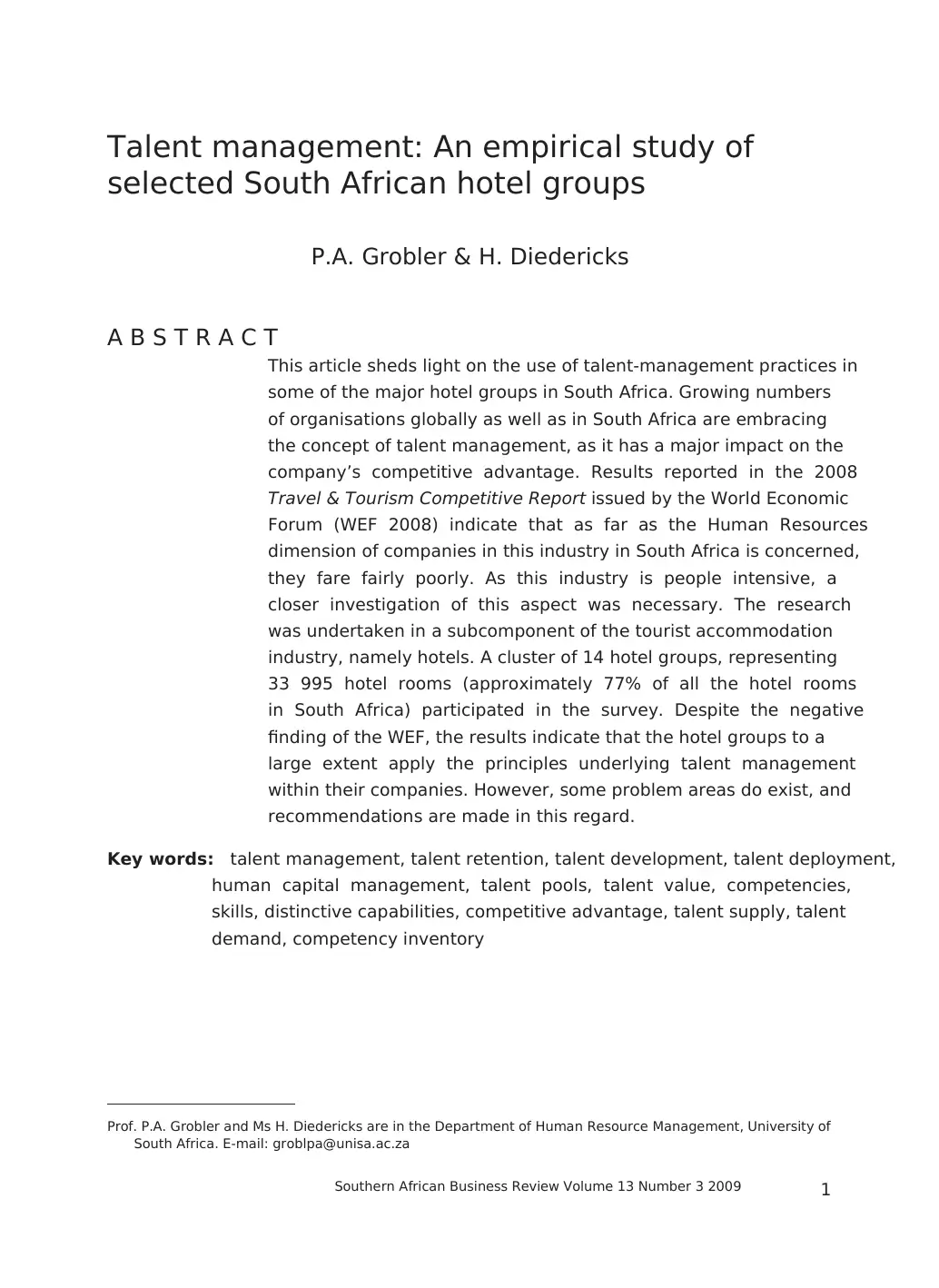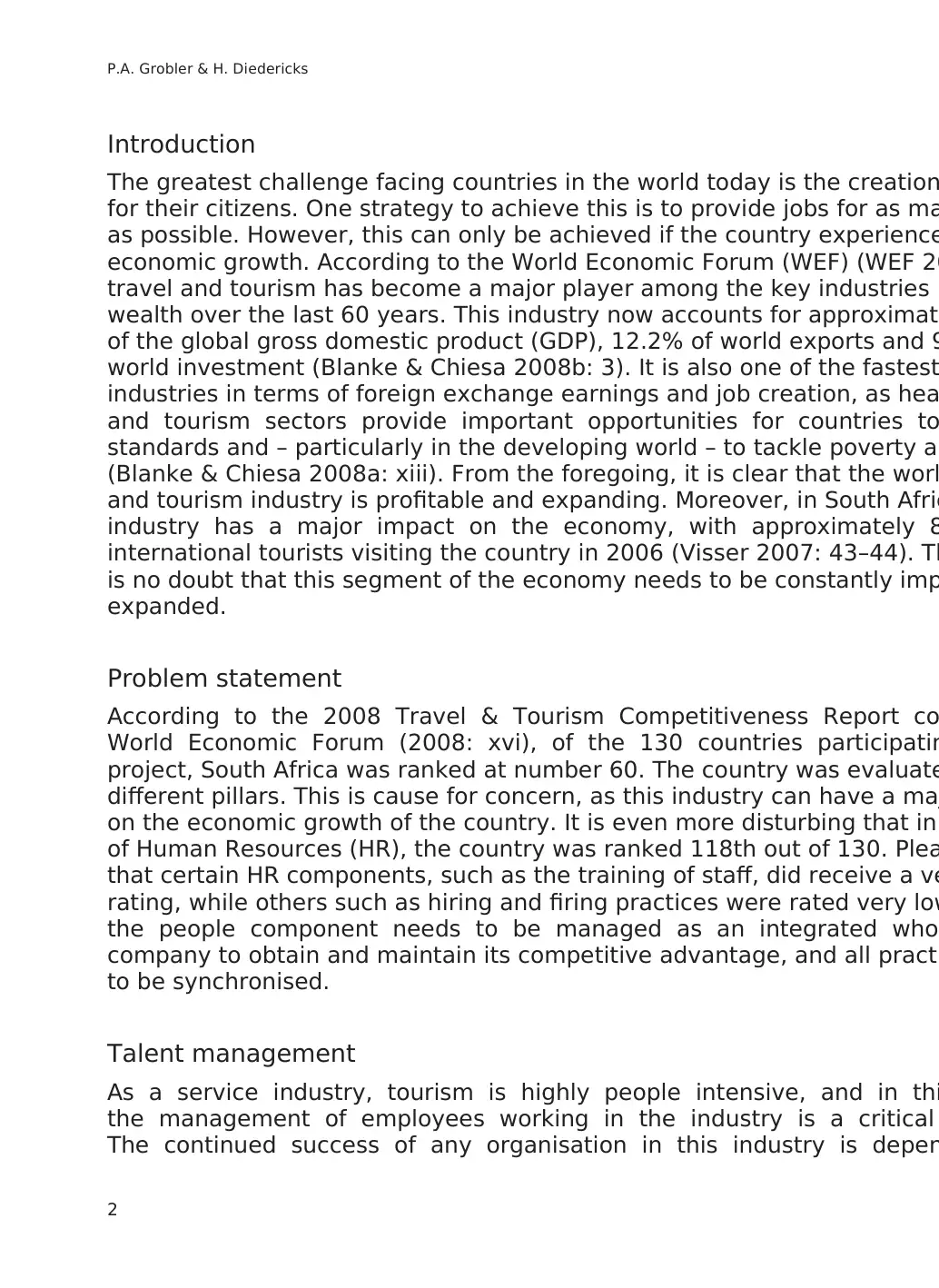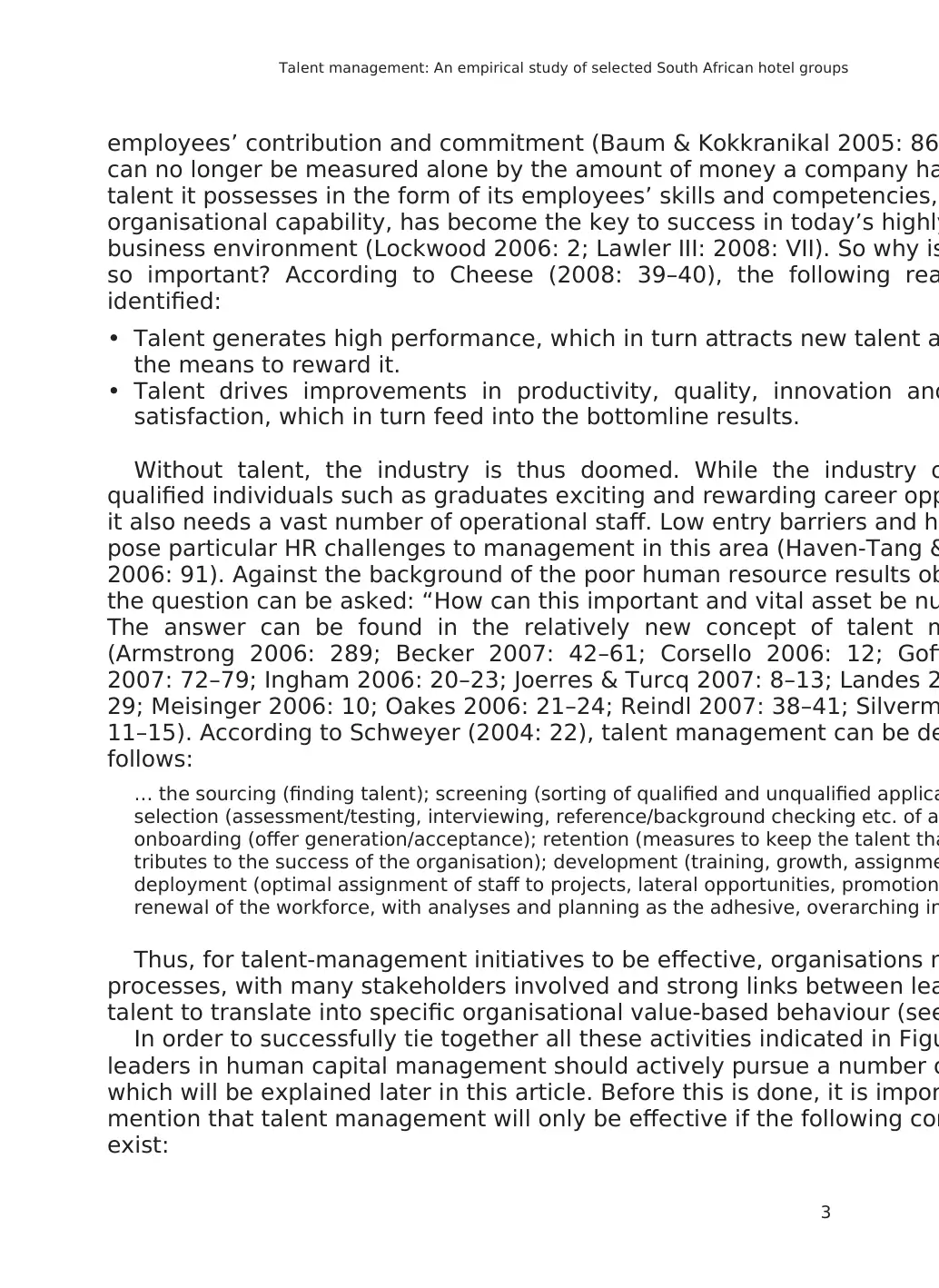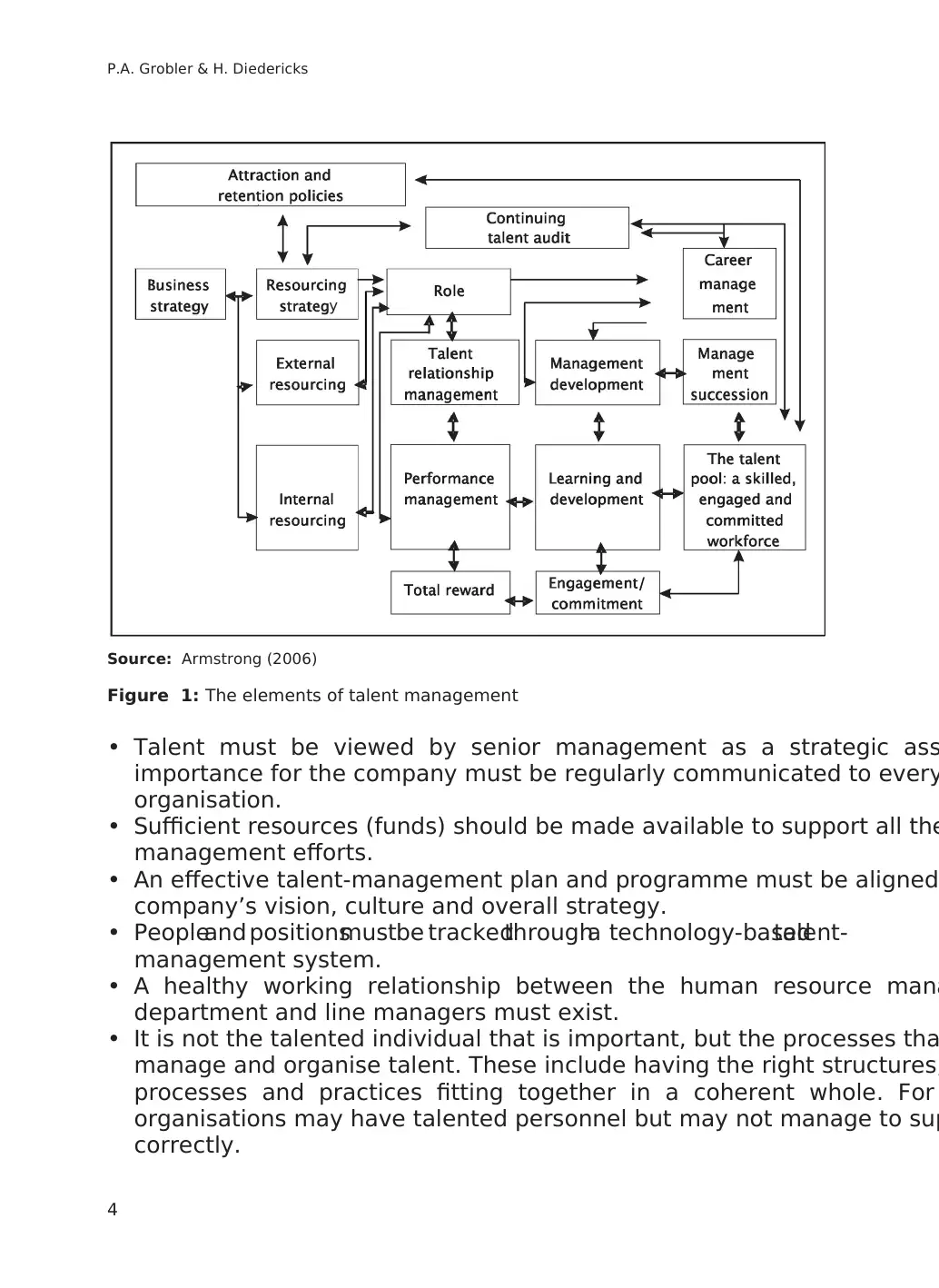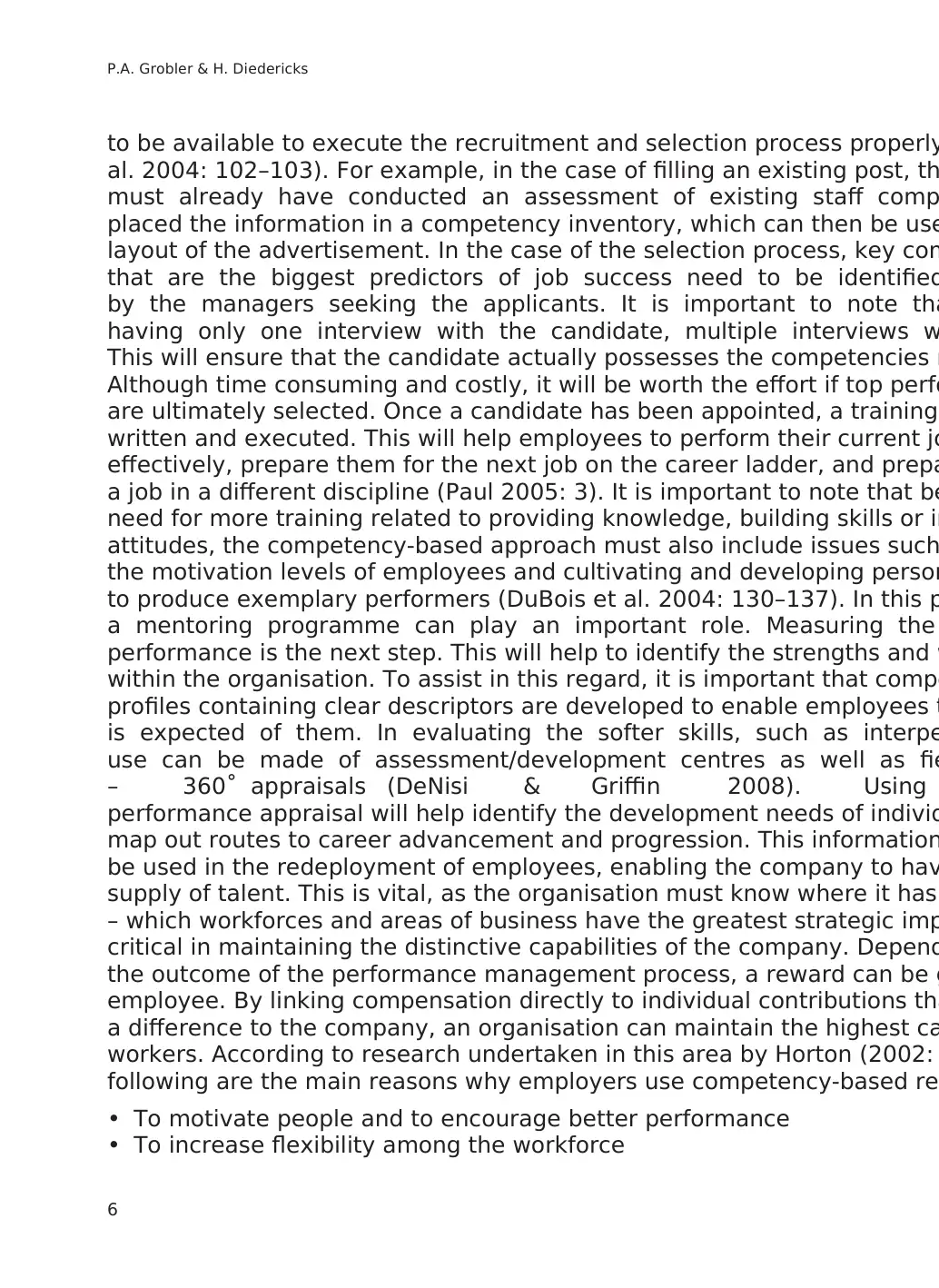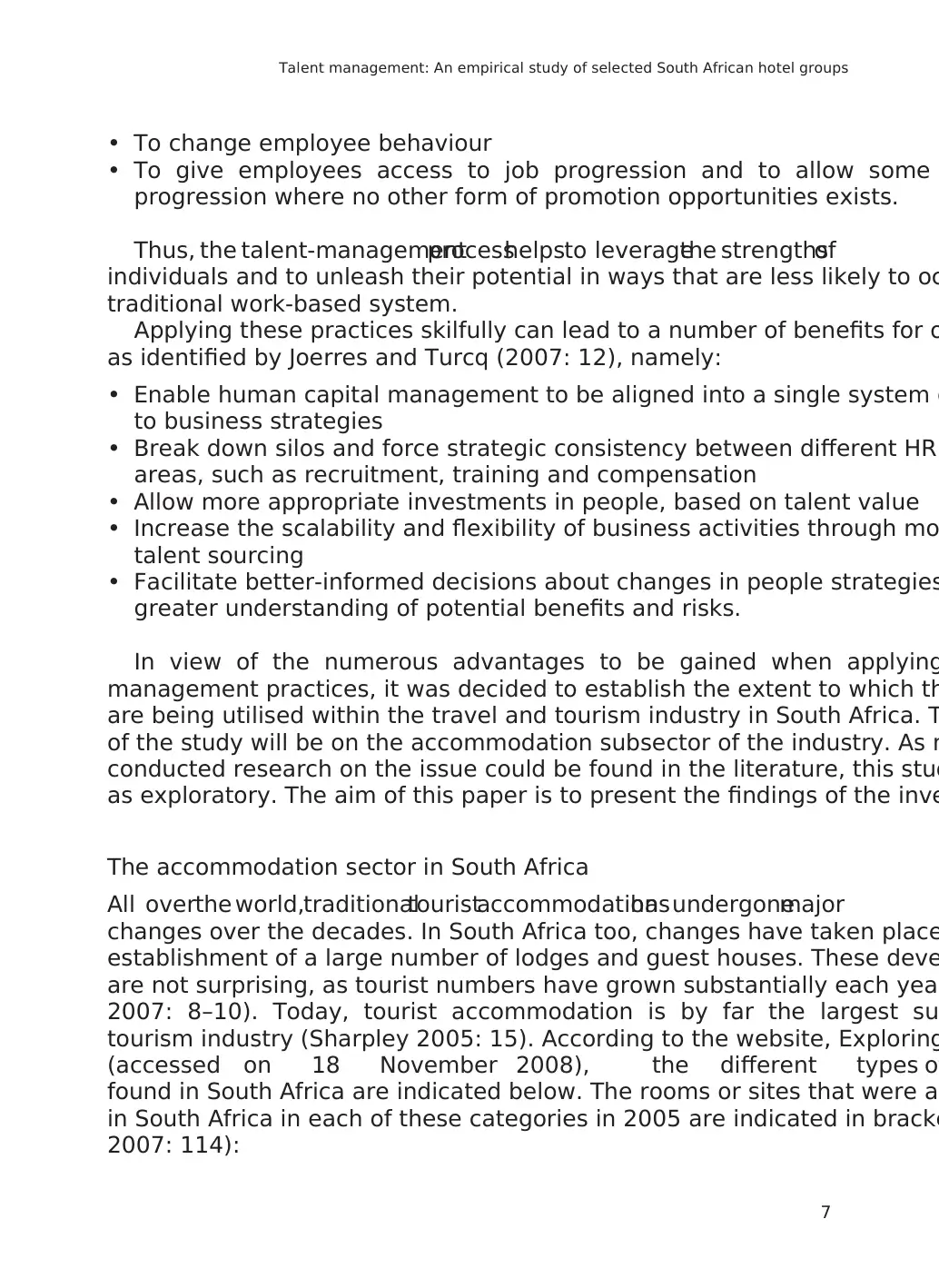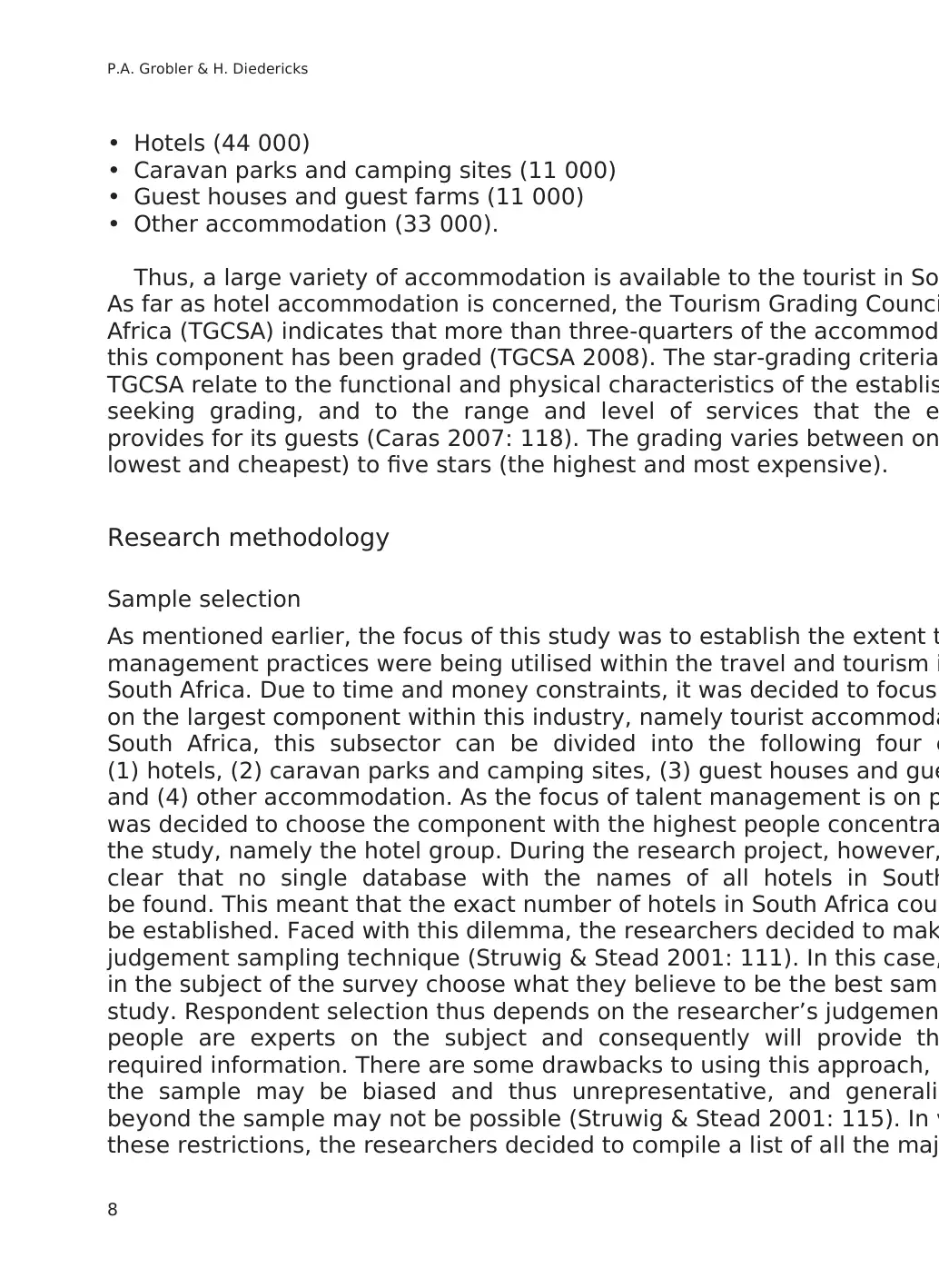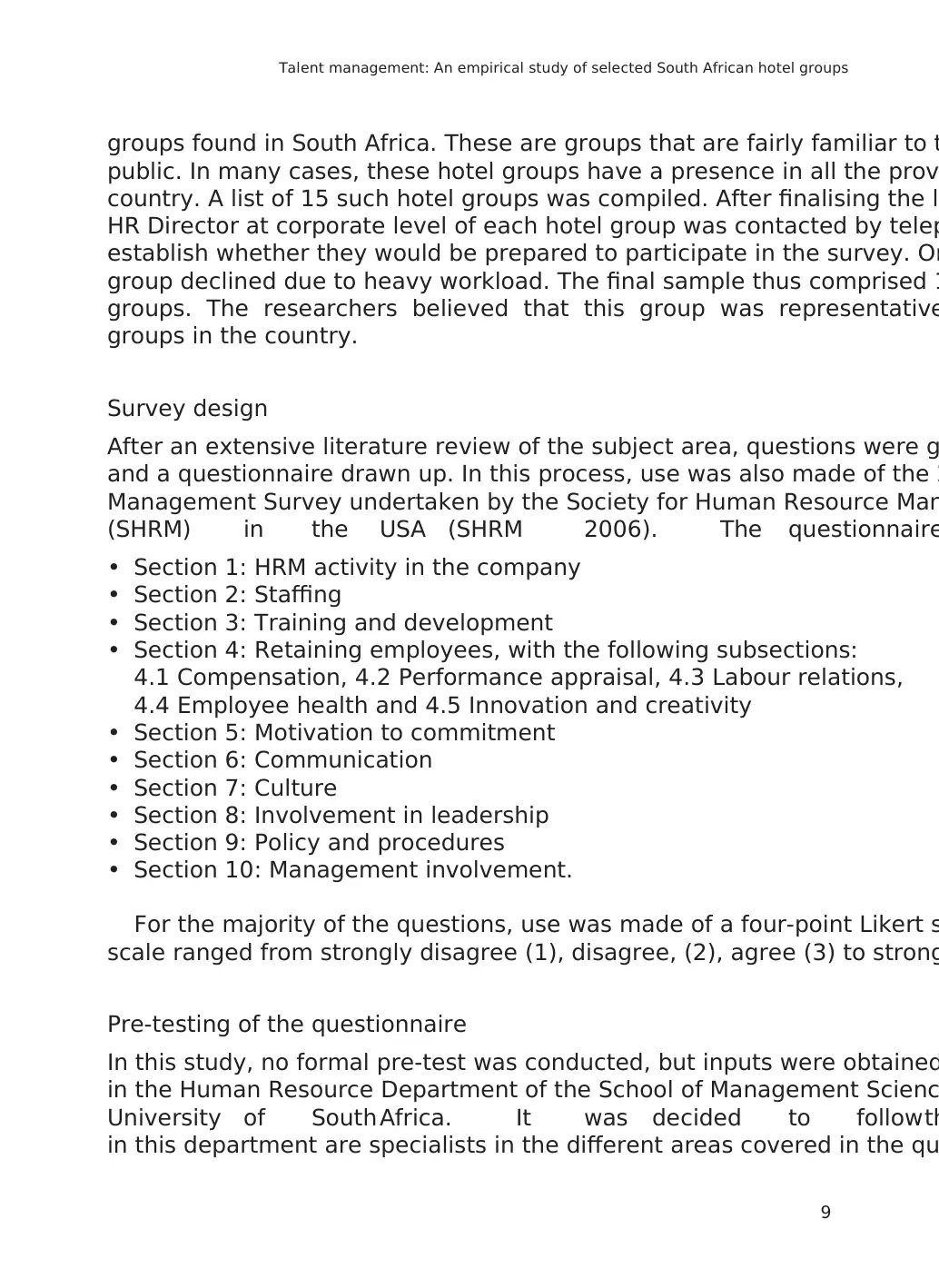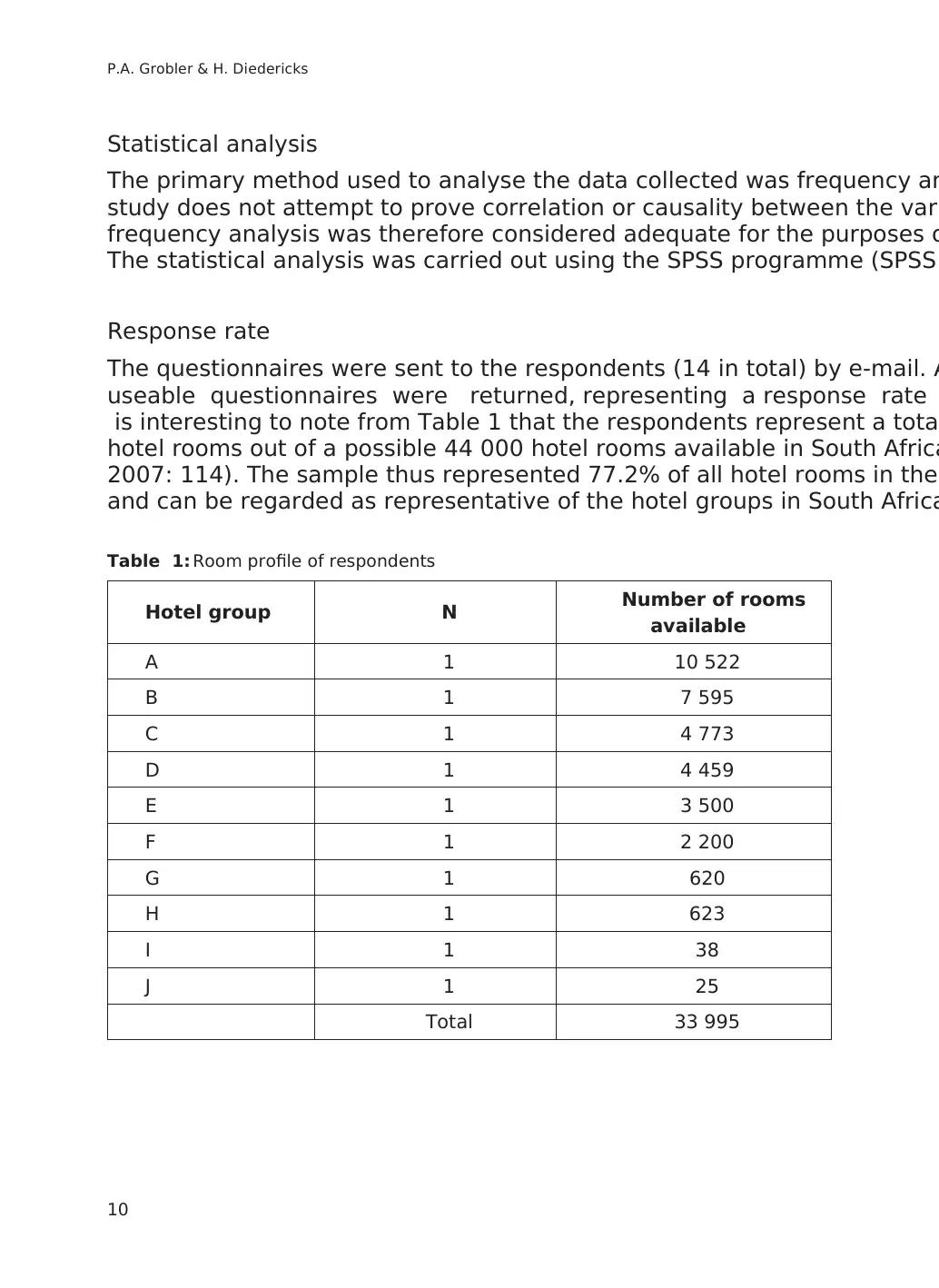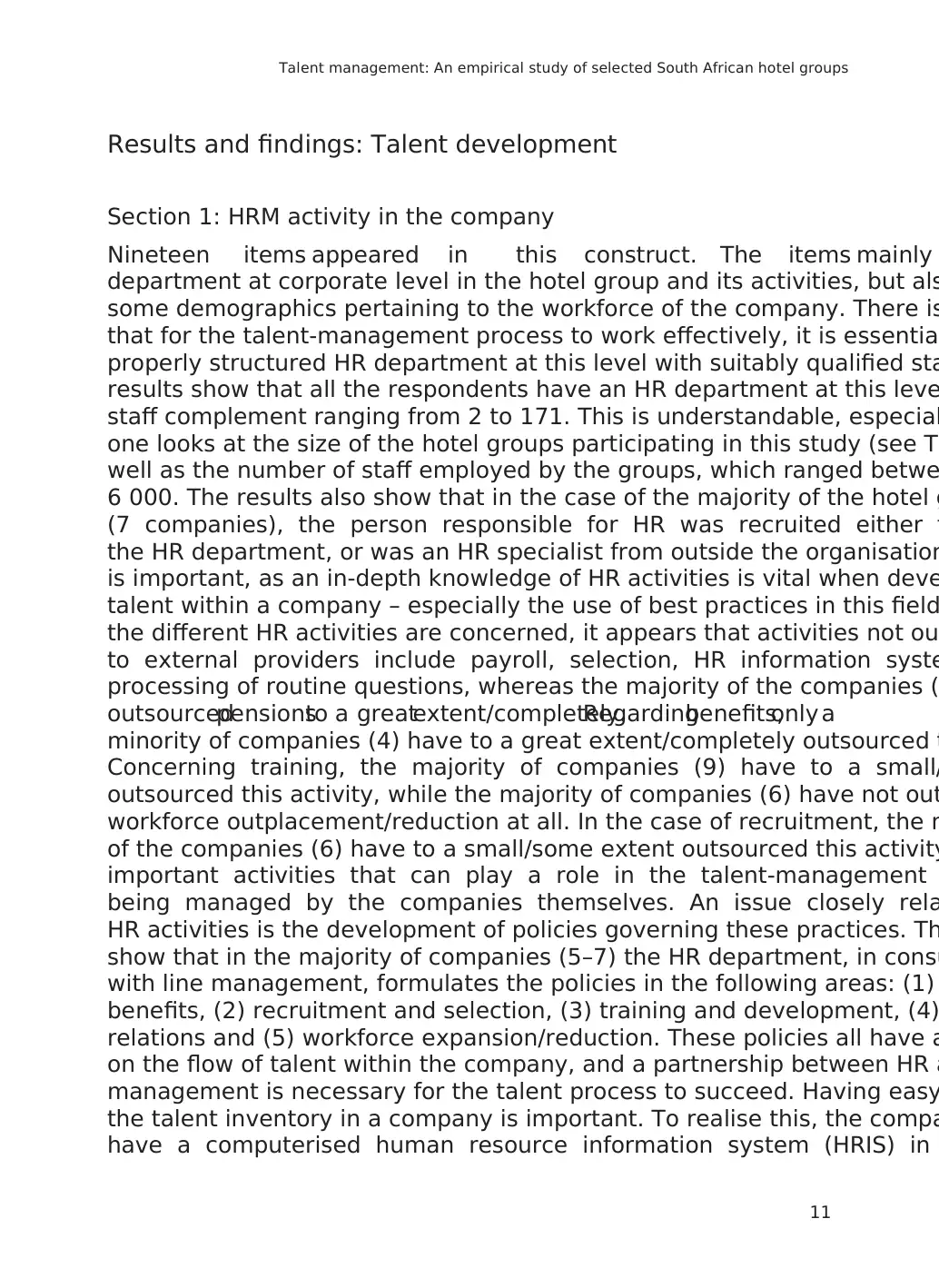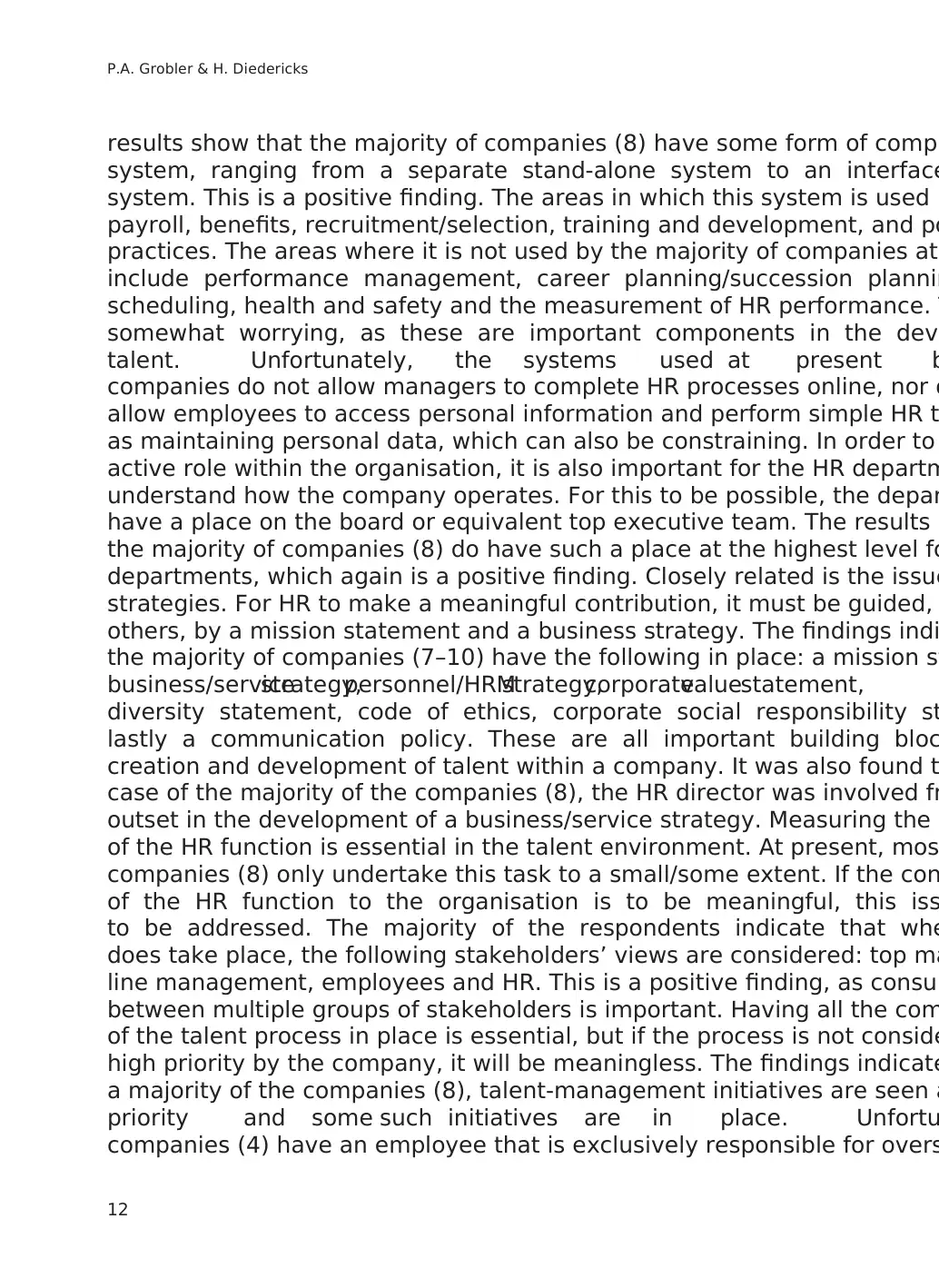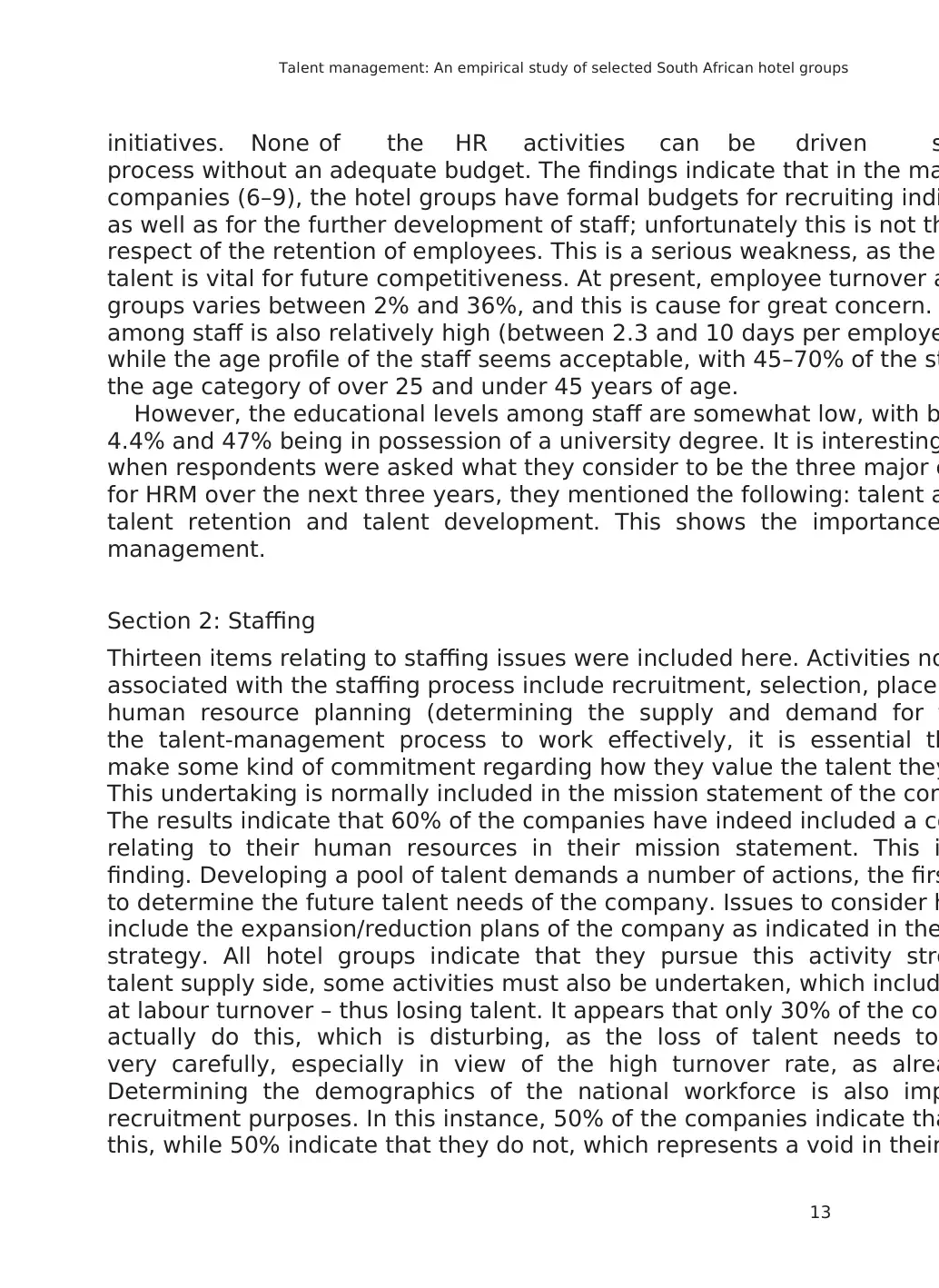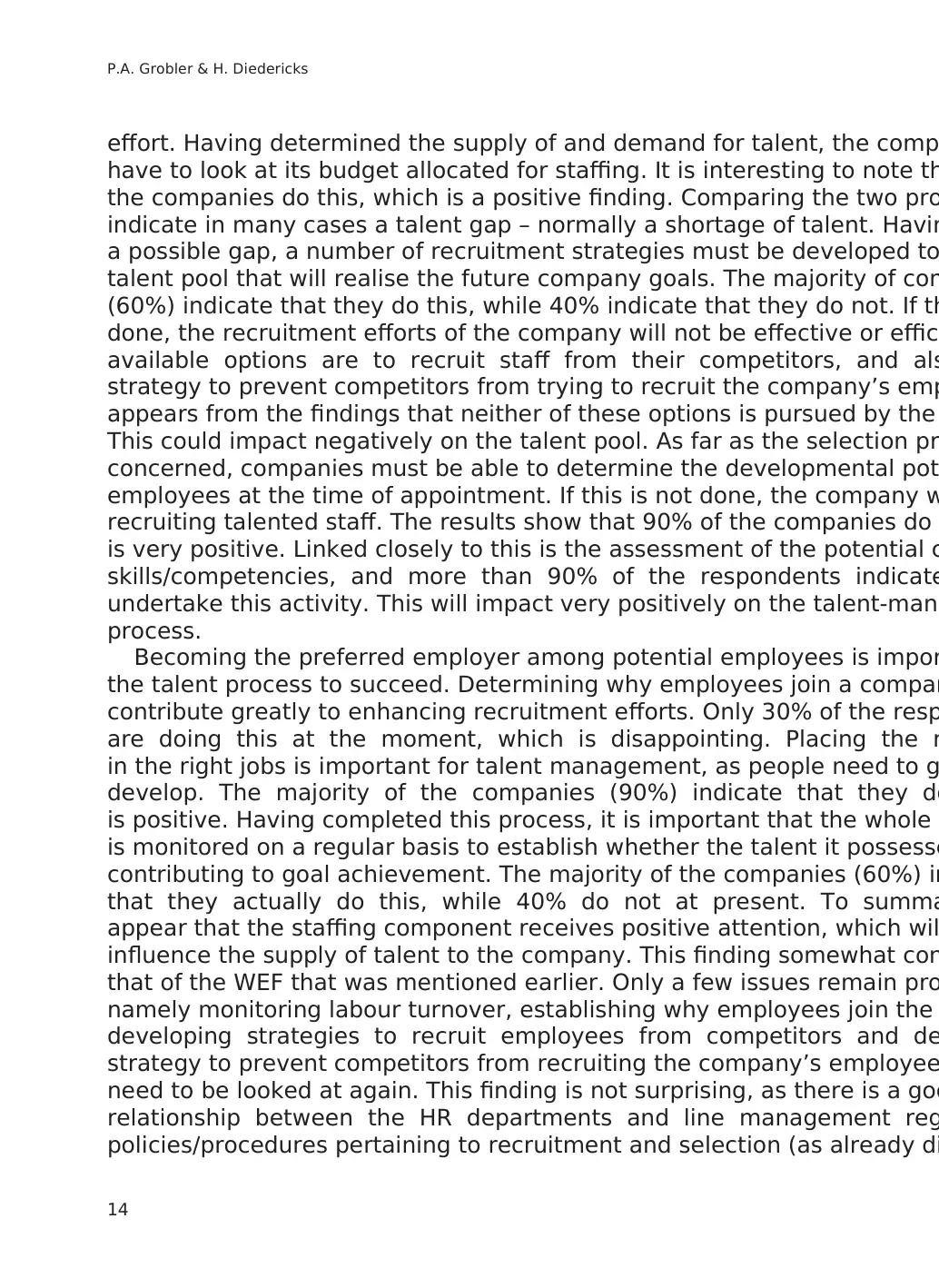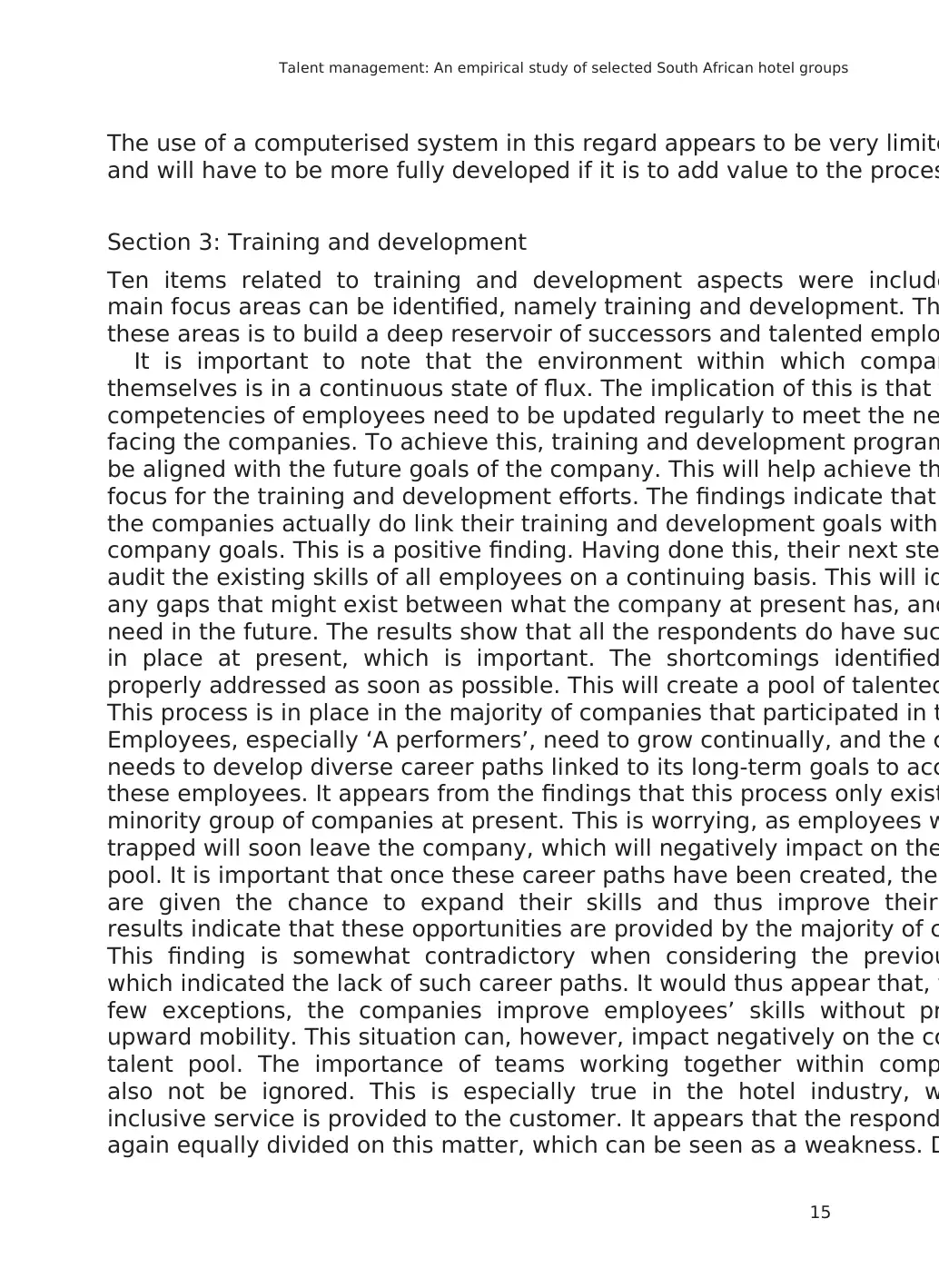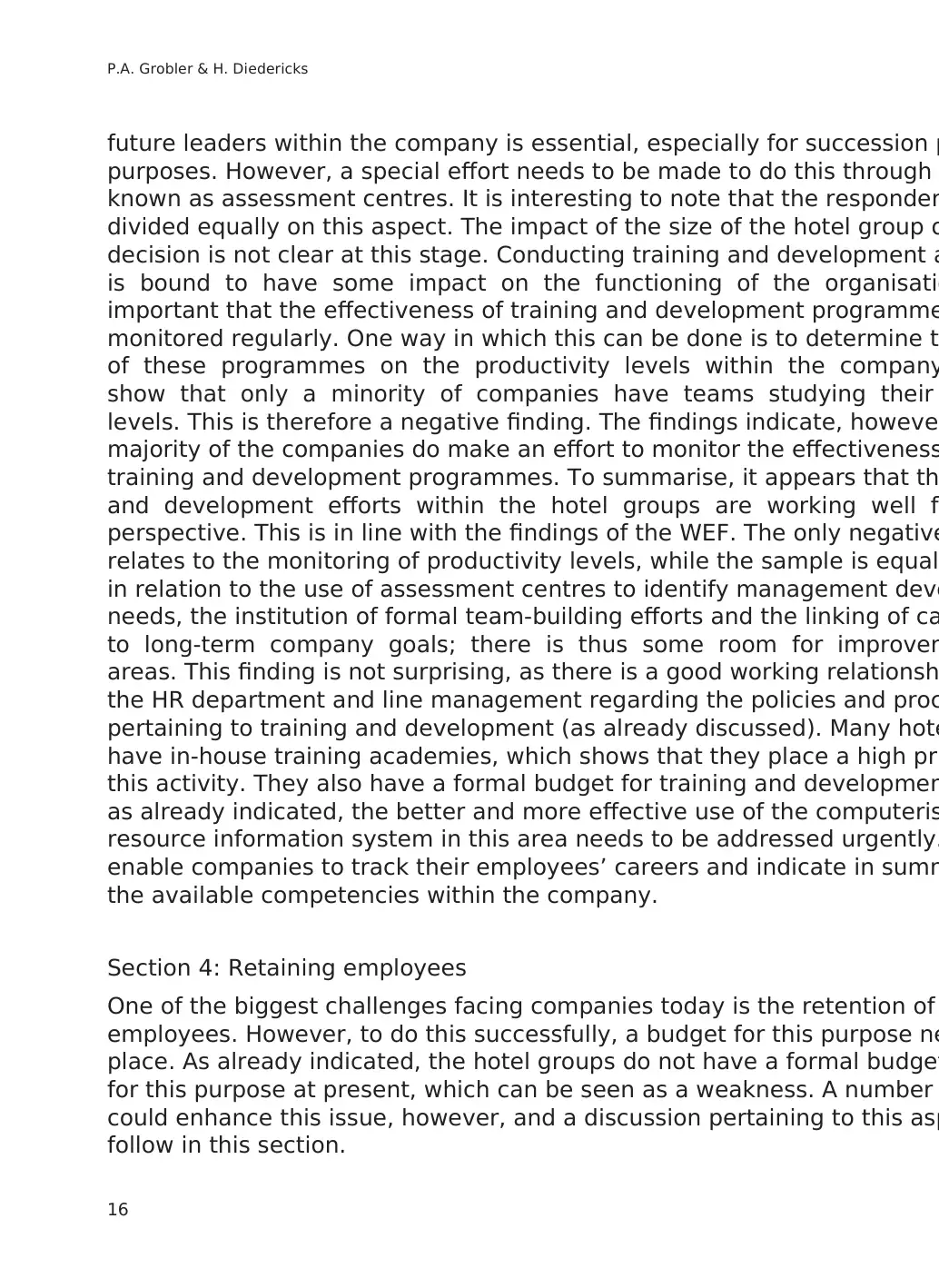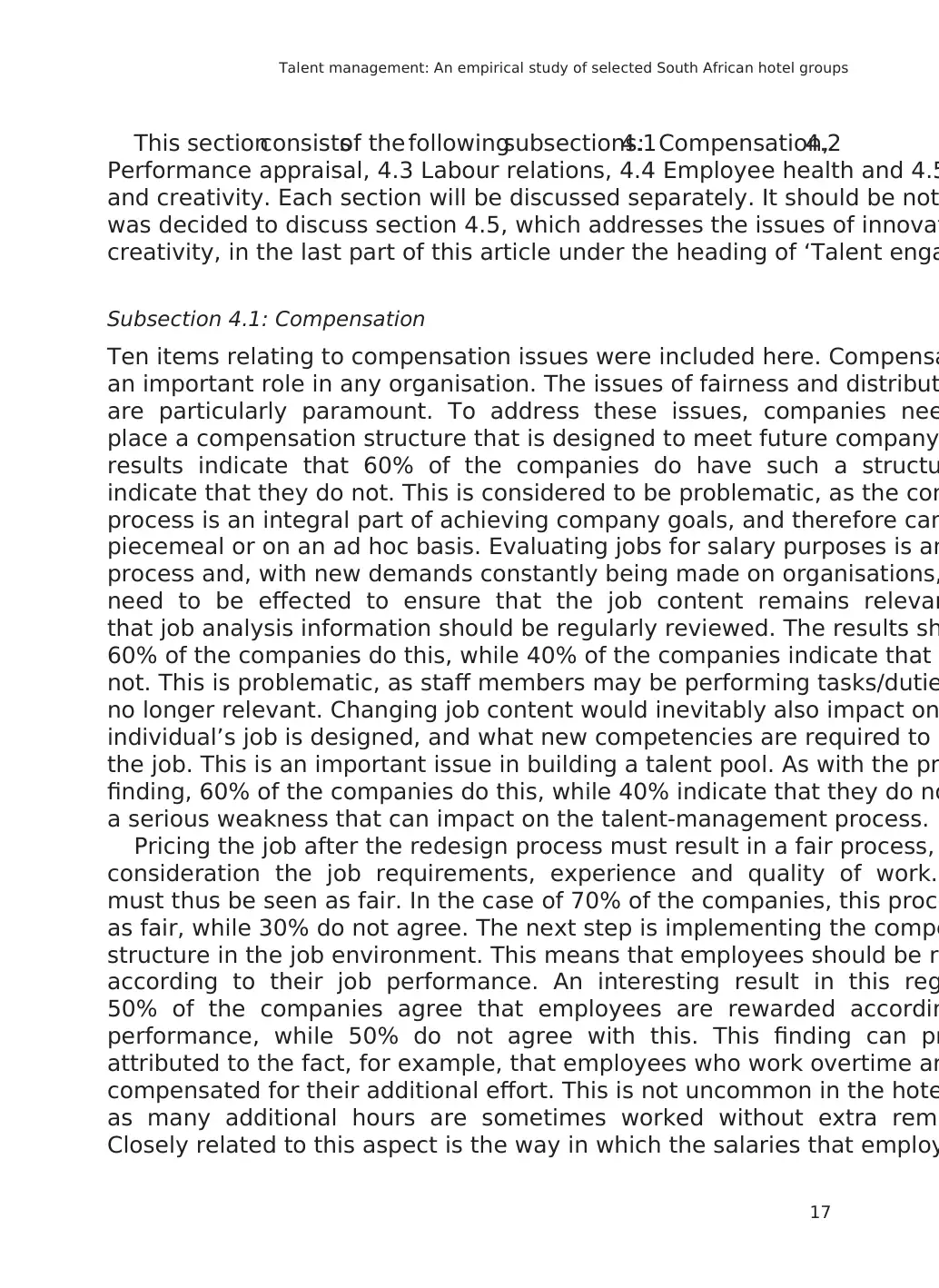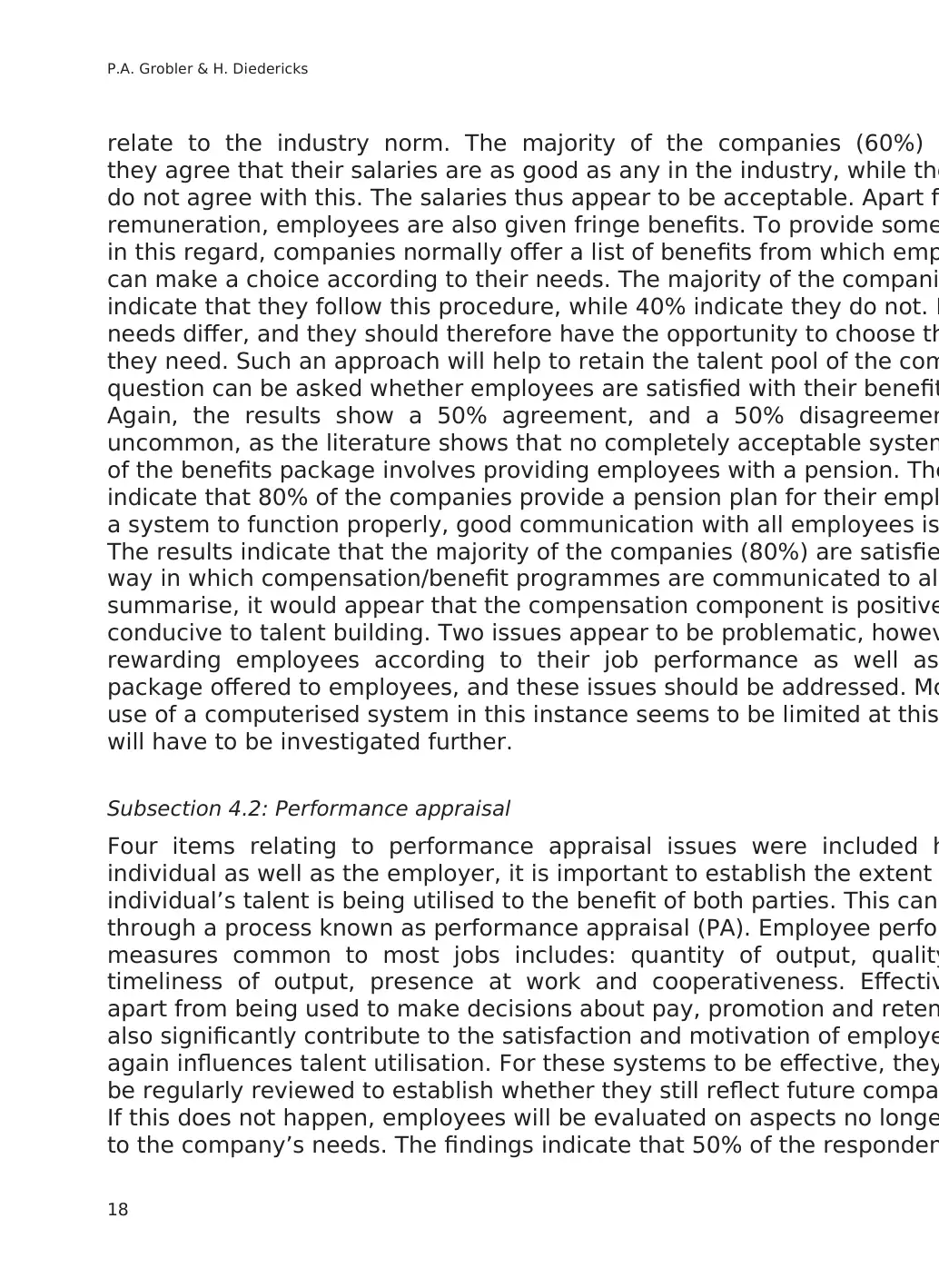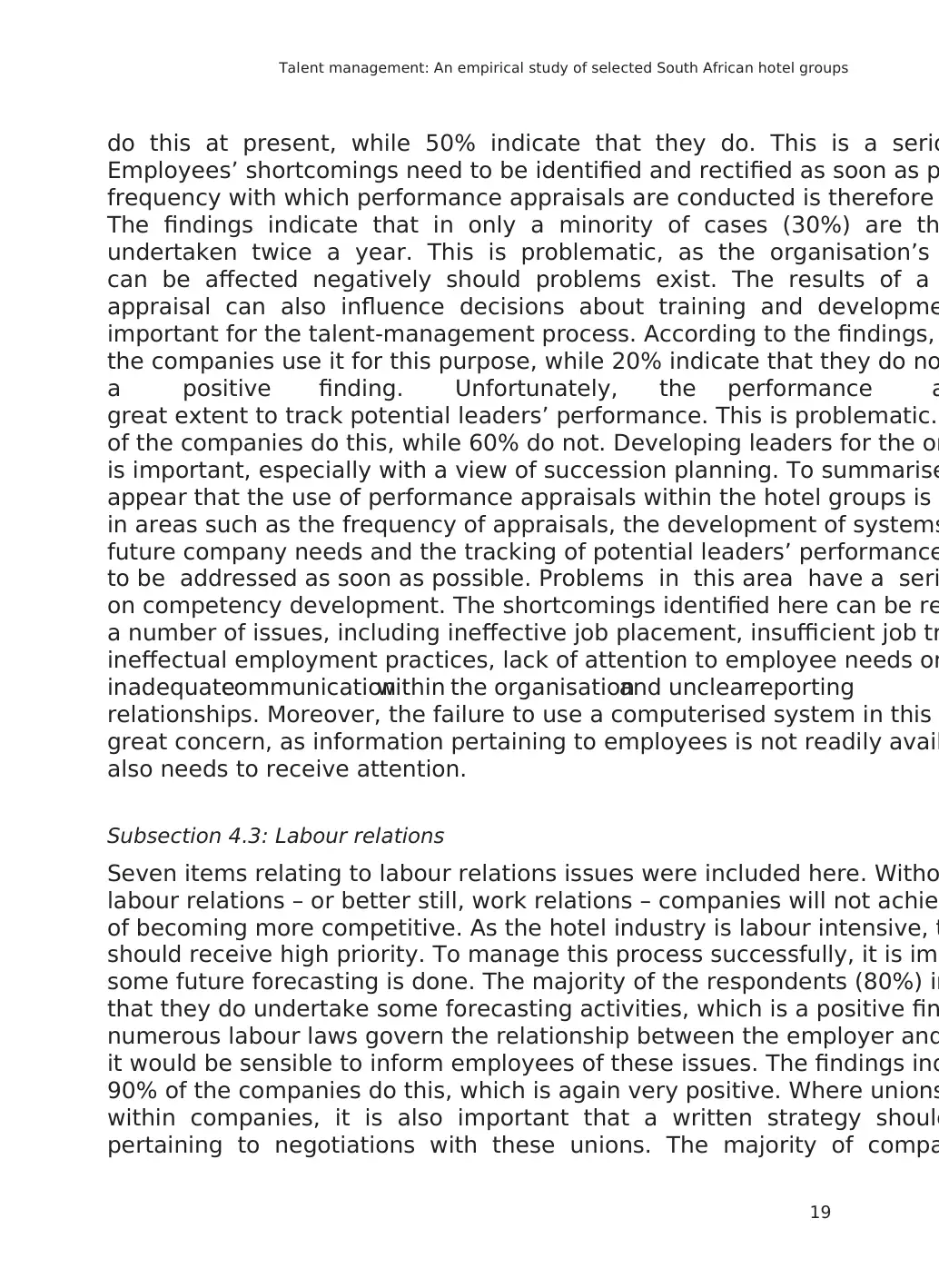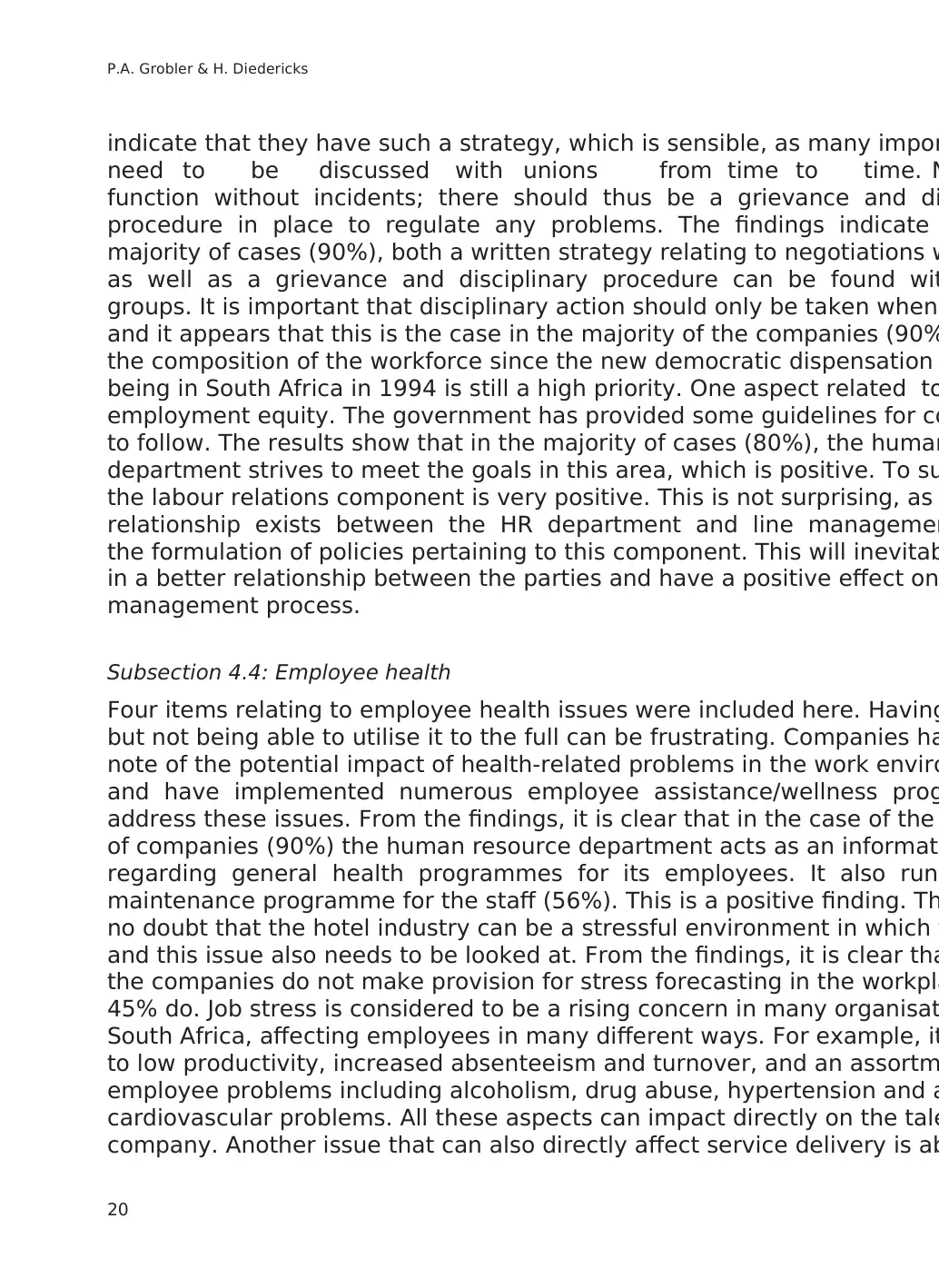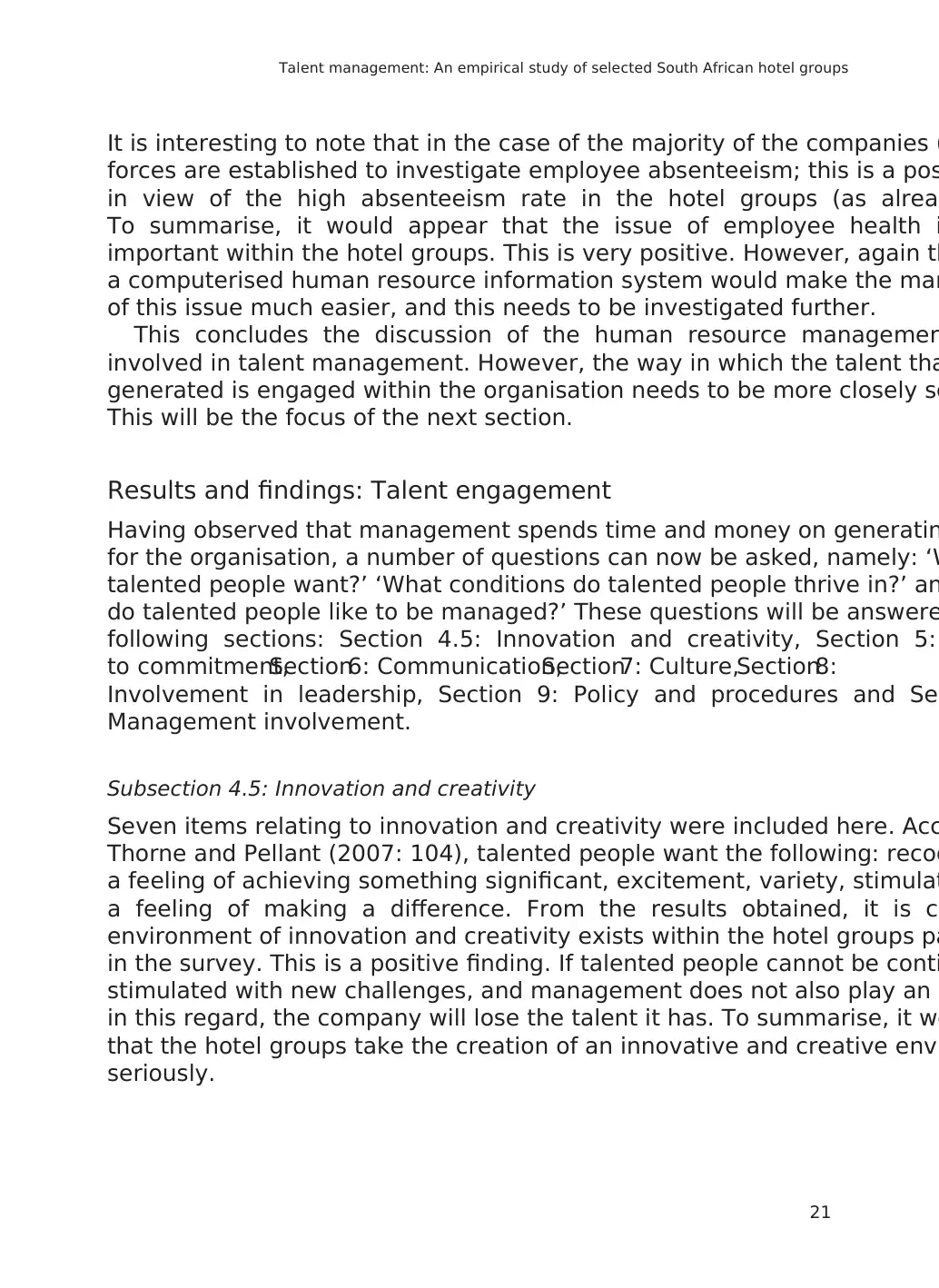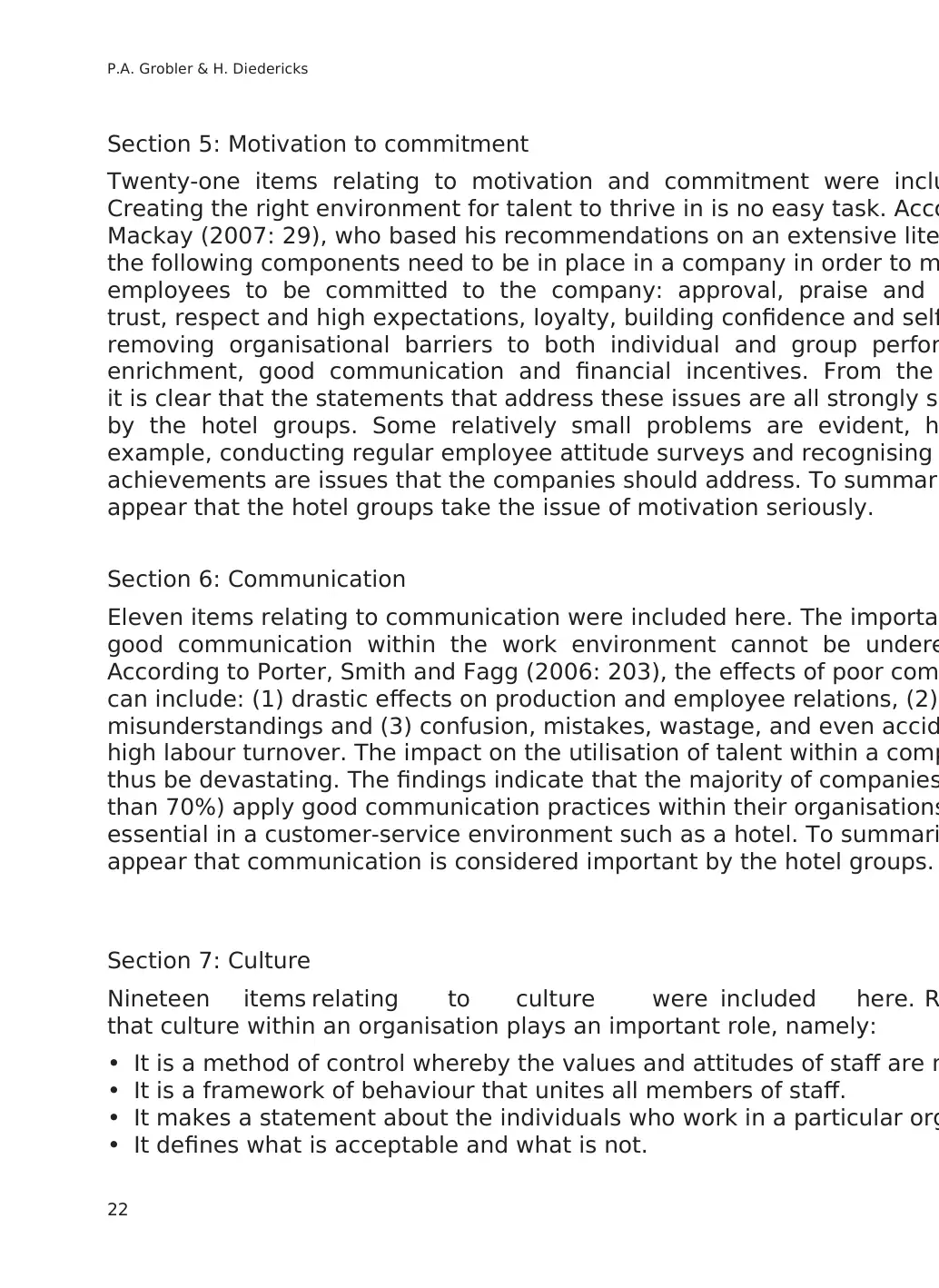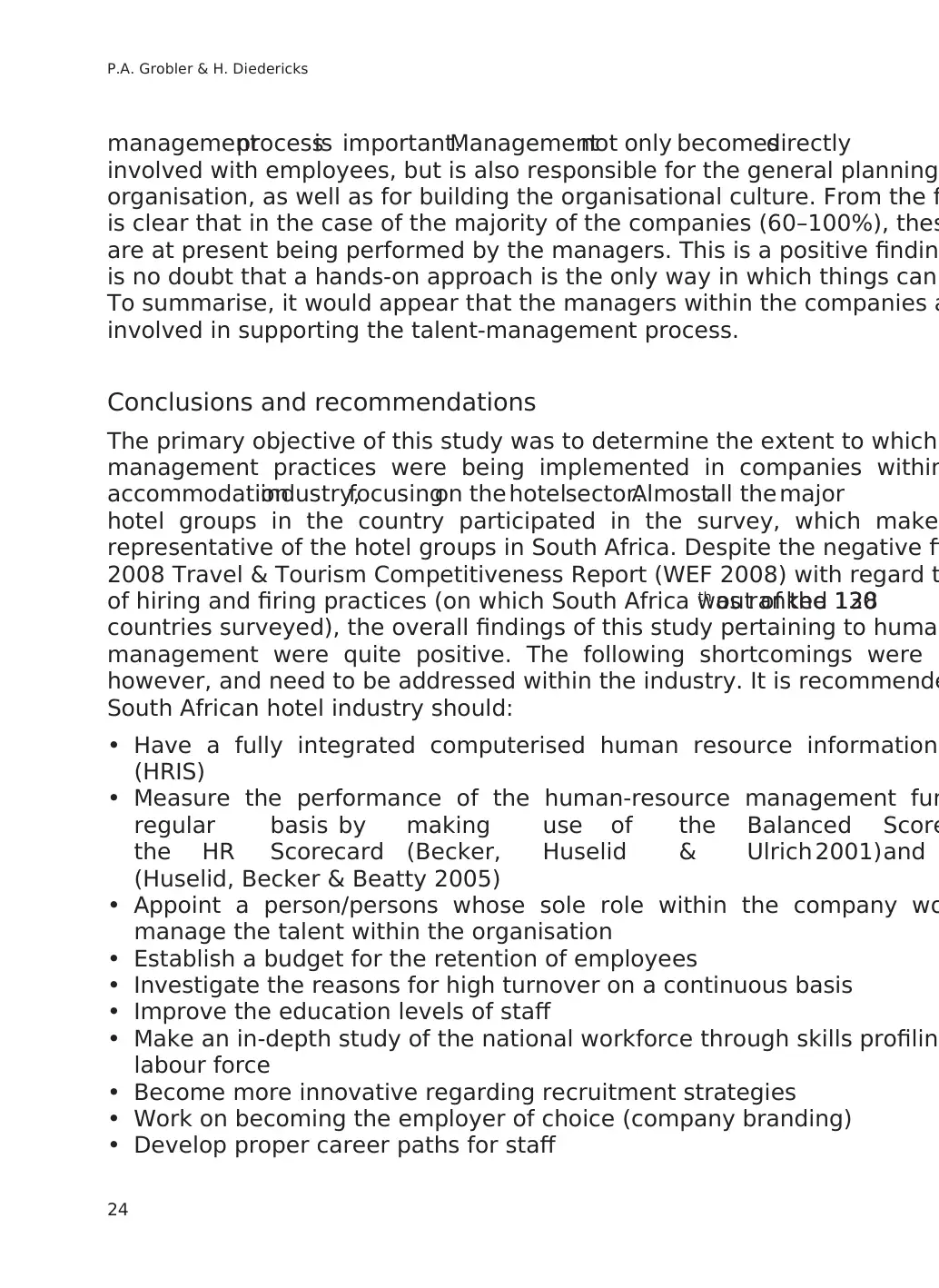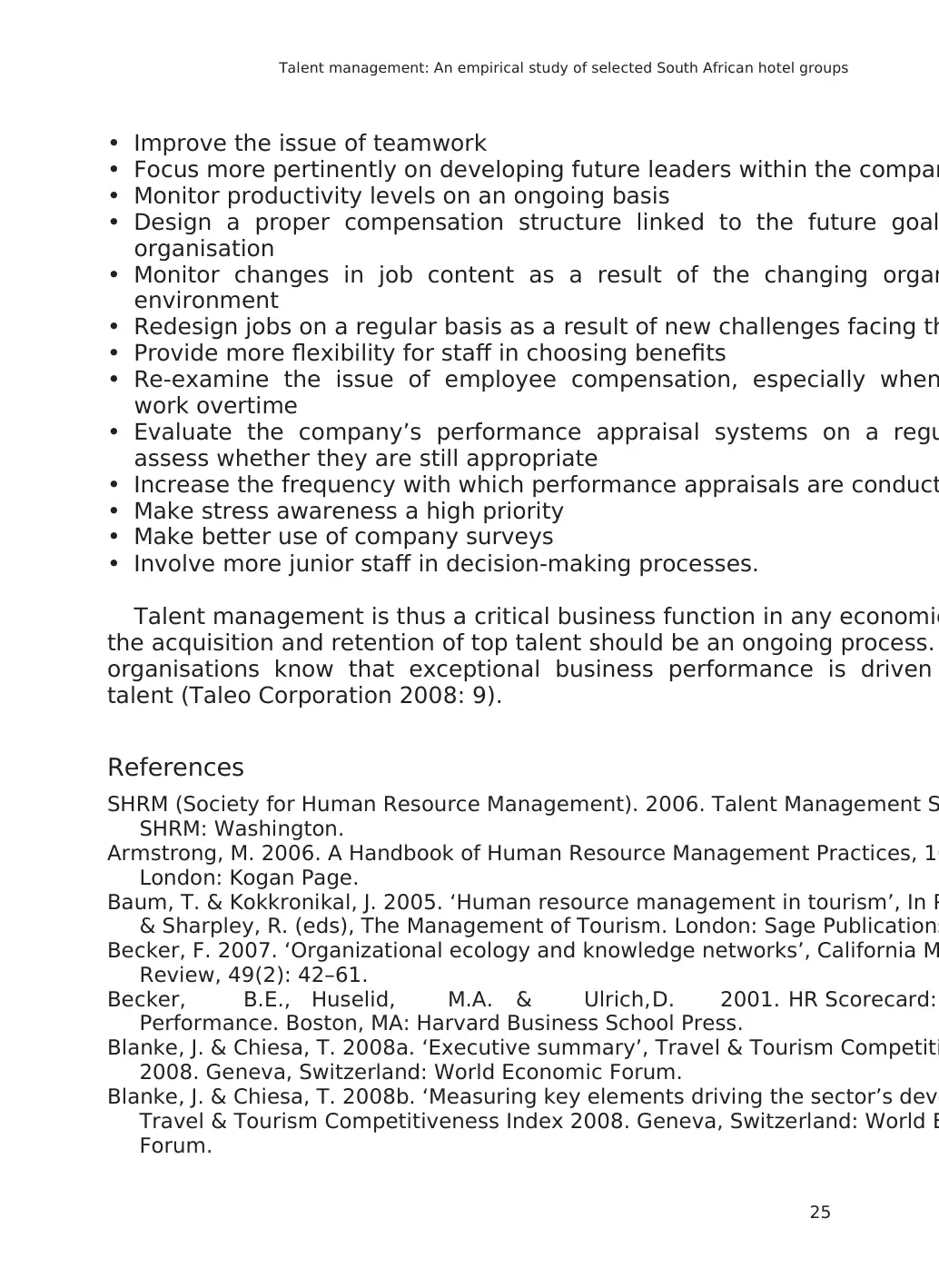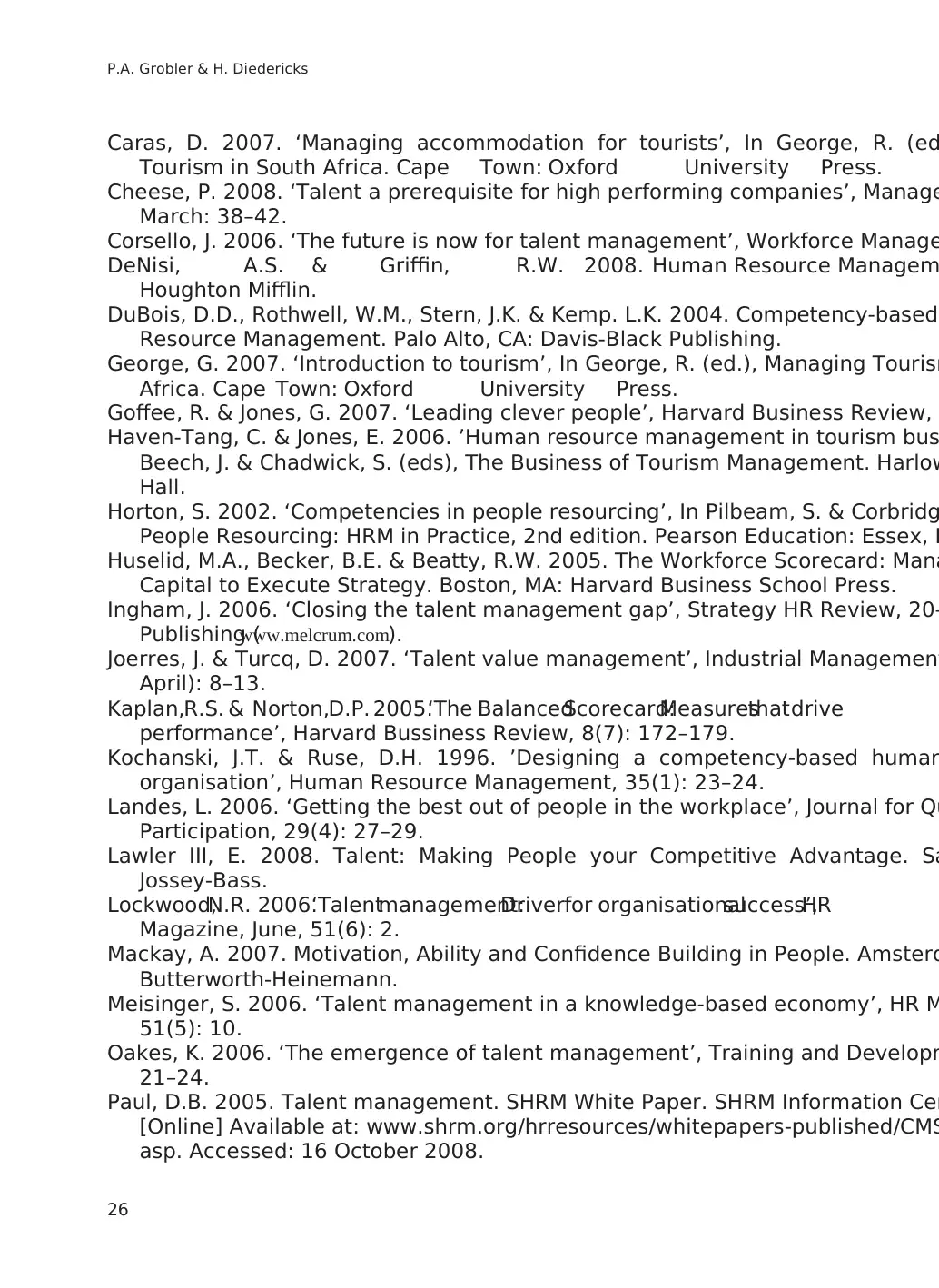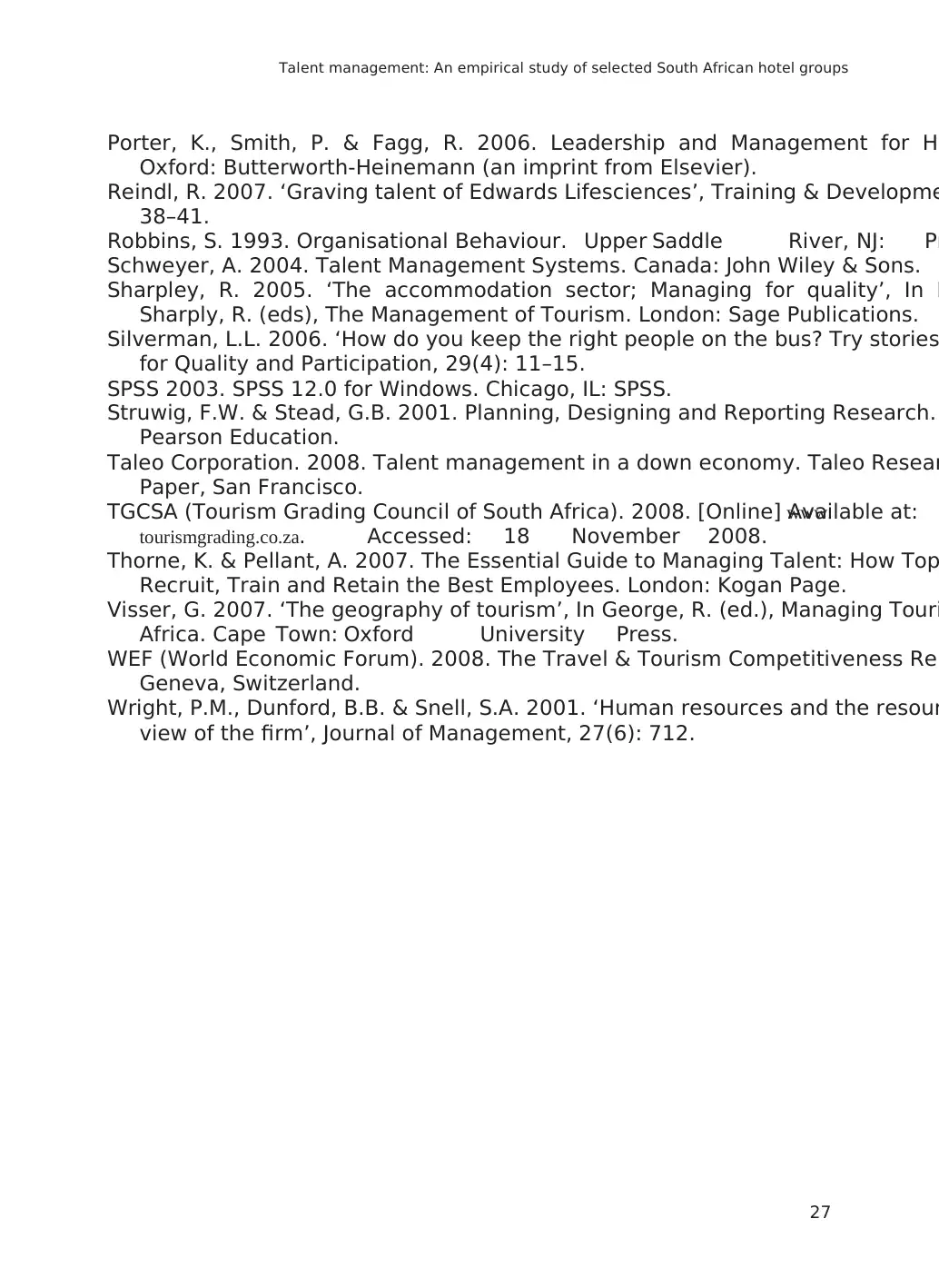This article sheds light on the use of talent-management practices in some of the major hotel groups in South Africa. Results reported in the 2008 Travel & Tourism Competitive Report issued by the World Economic Forum indicate that as far as the Human Resources dimension of companies in this industry in South Africa is concerned, they fare fairly poorly. The research was undertaken in a subcomponent of the tourist accommodation industry, namely hotels. A cluster of 14 hotel groups participated in the survey. Despite the negative finding of the WEF, the results indicate that the hotel groups to a large extent apply the principles underlying talent management within their companies. However, some problem areas do exist, and recommendations are made in this regard.
![[object Object]](/_next/static/media/star-bottom.7253800d.svg)
![[object Object]](/_next/static/media/star-bottom.7253800d.svg)
